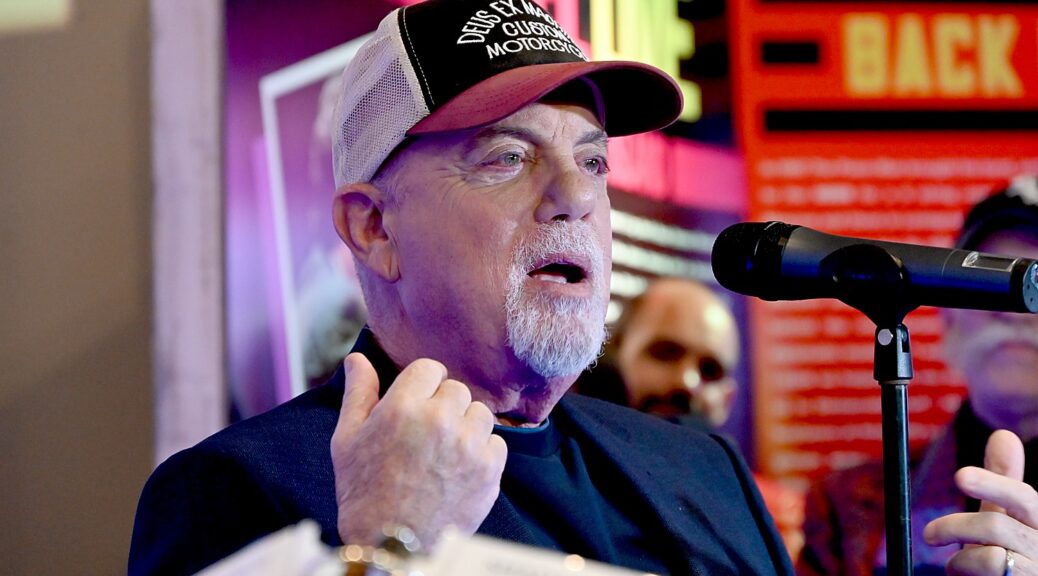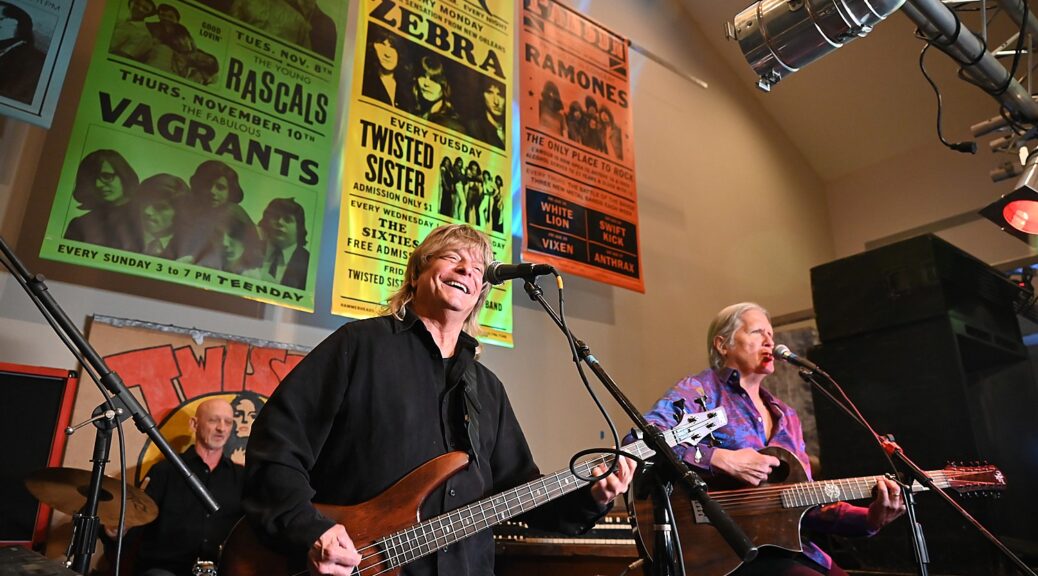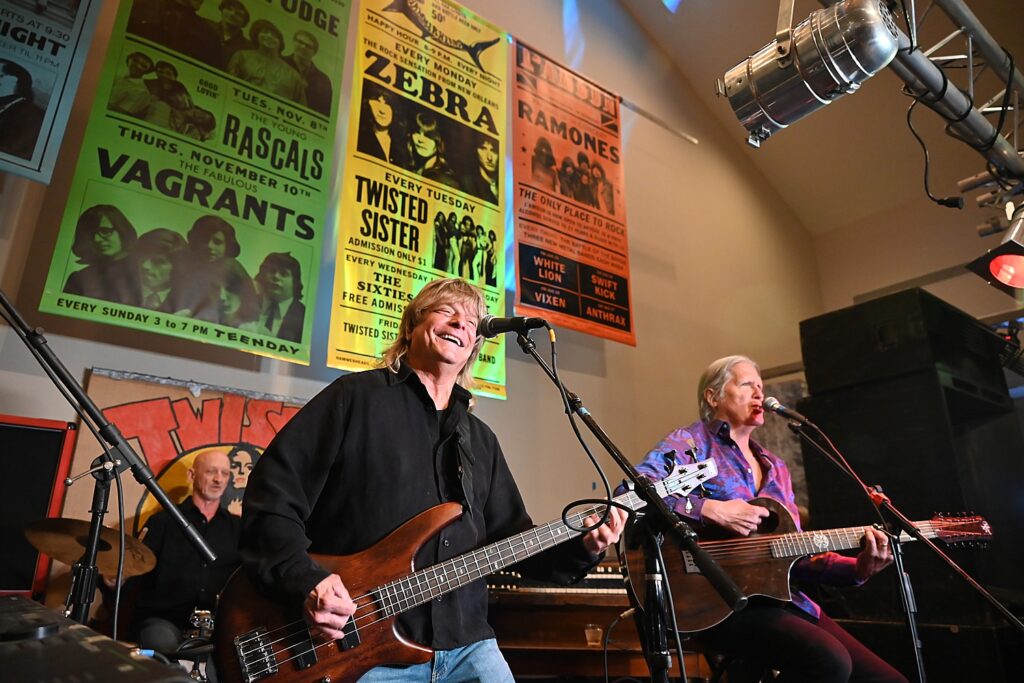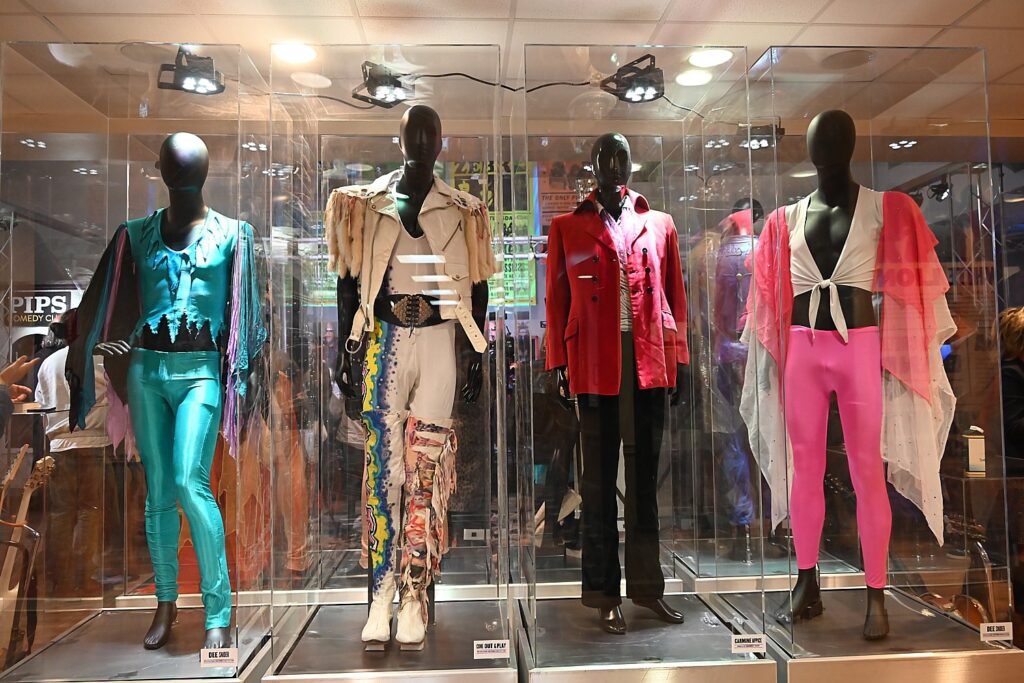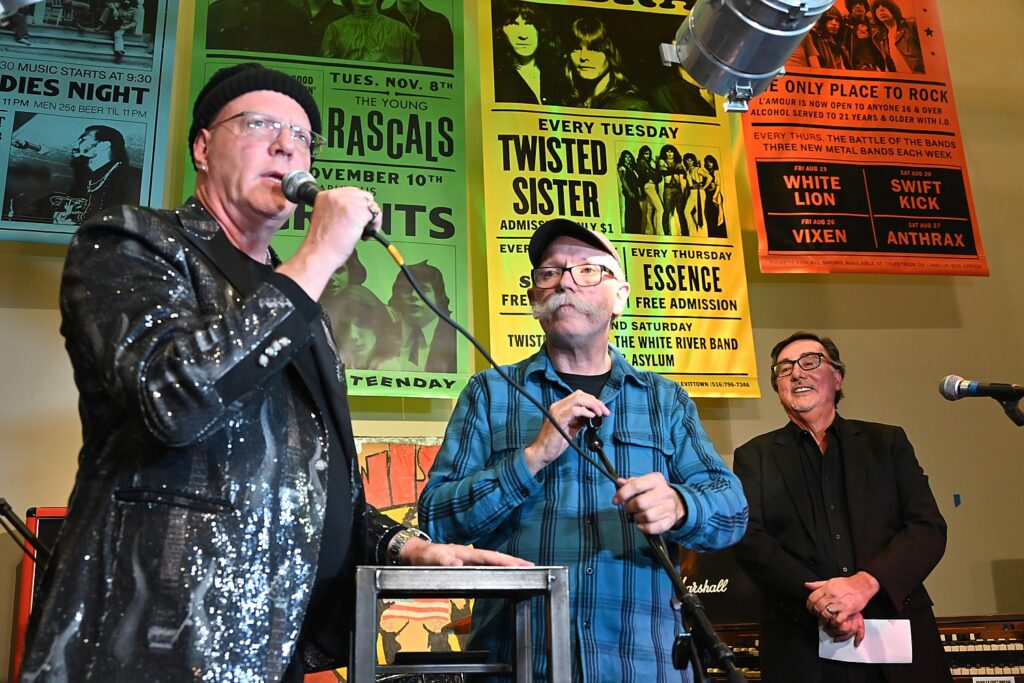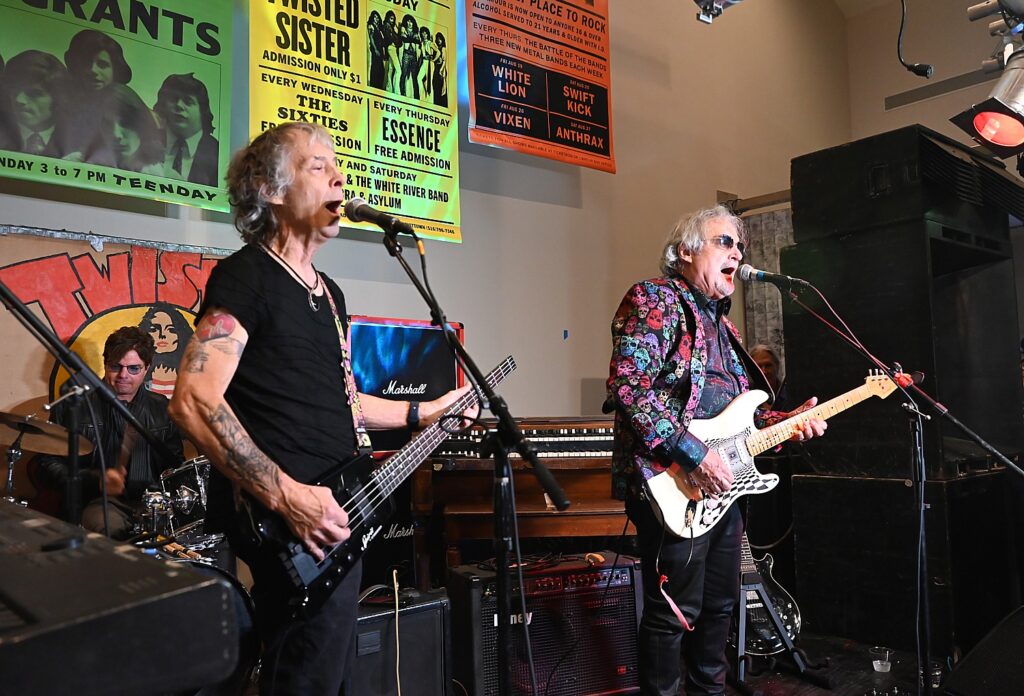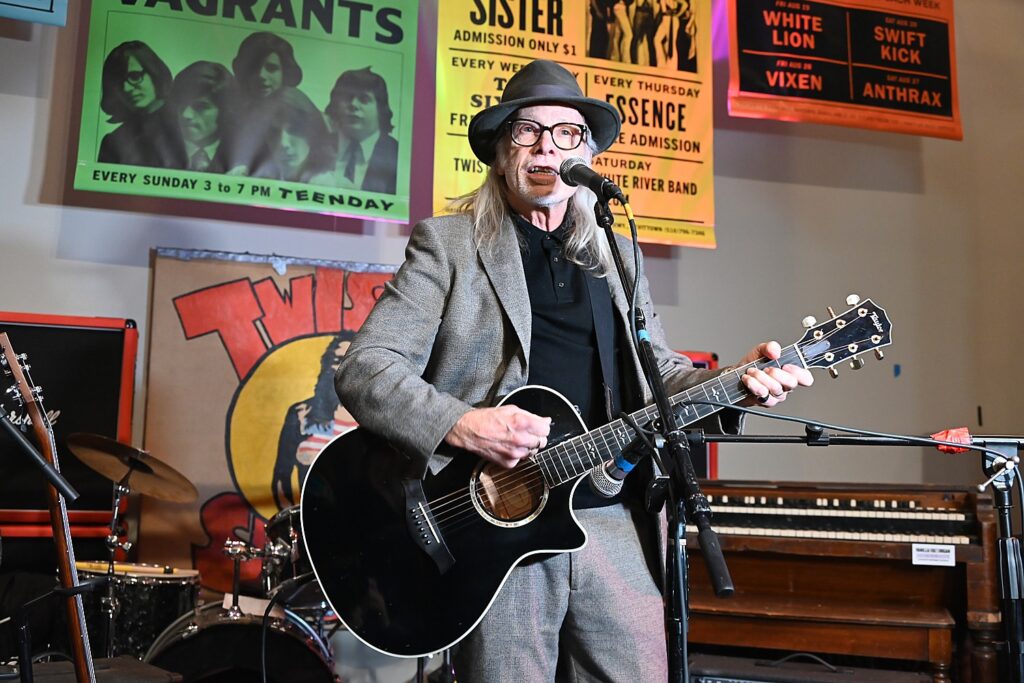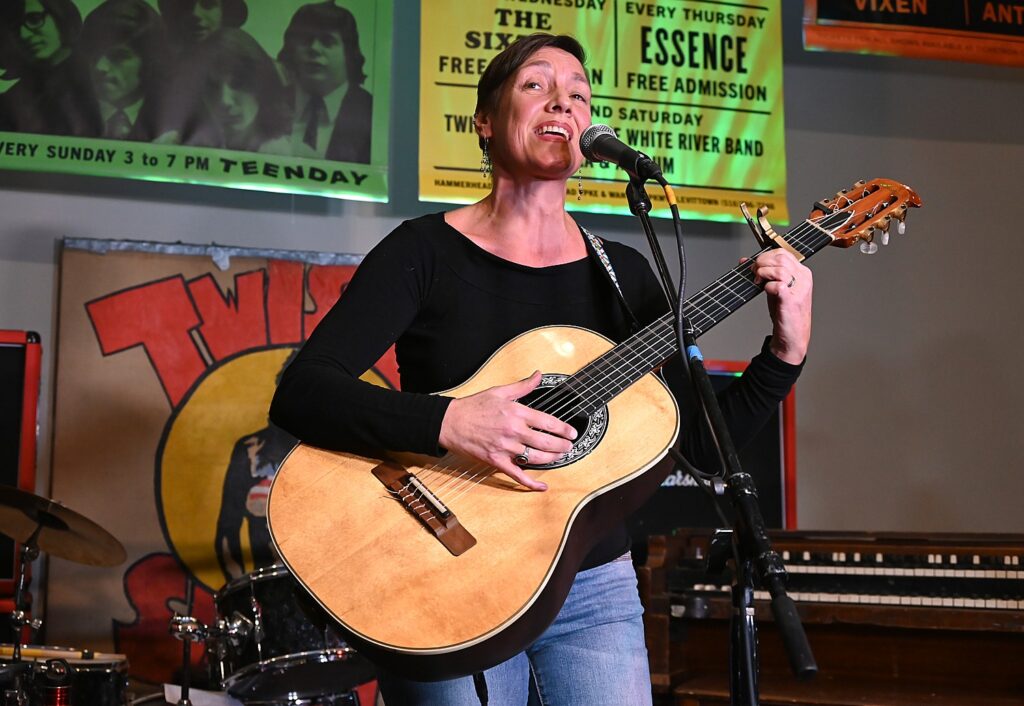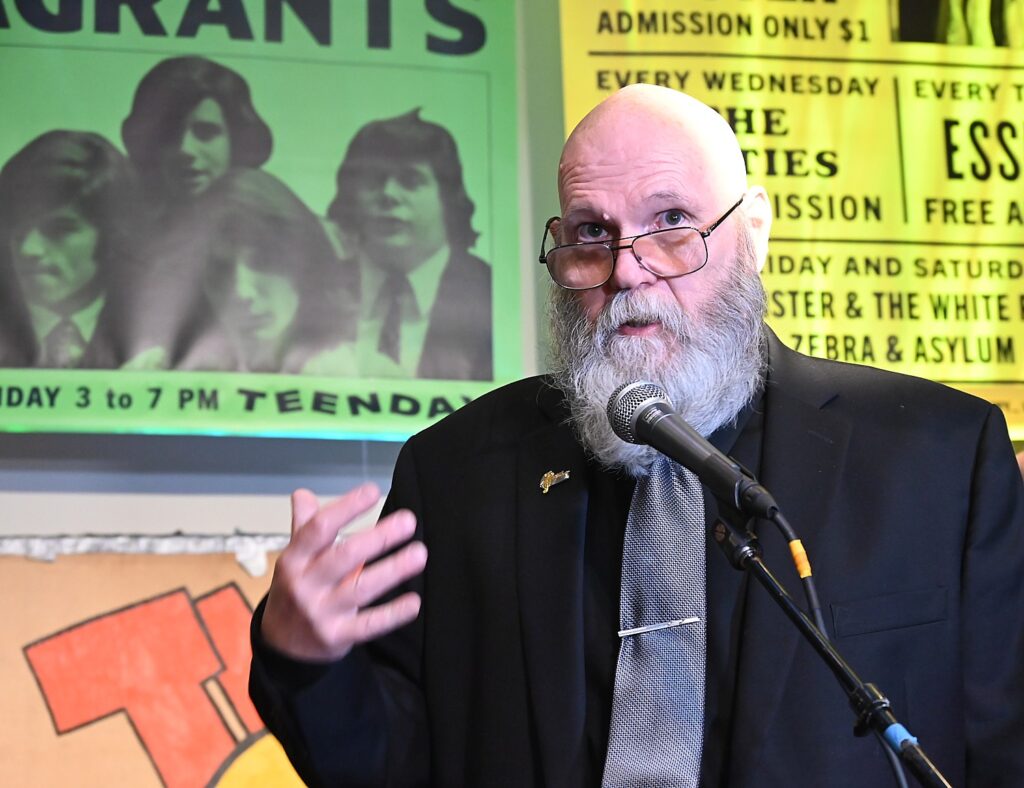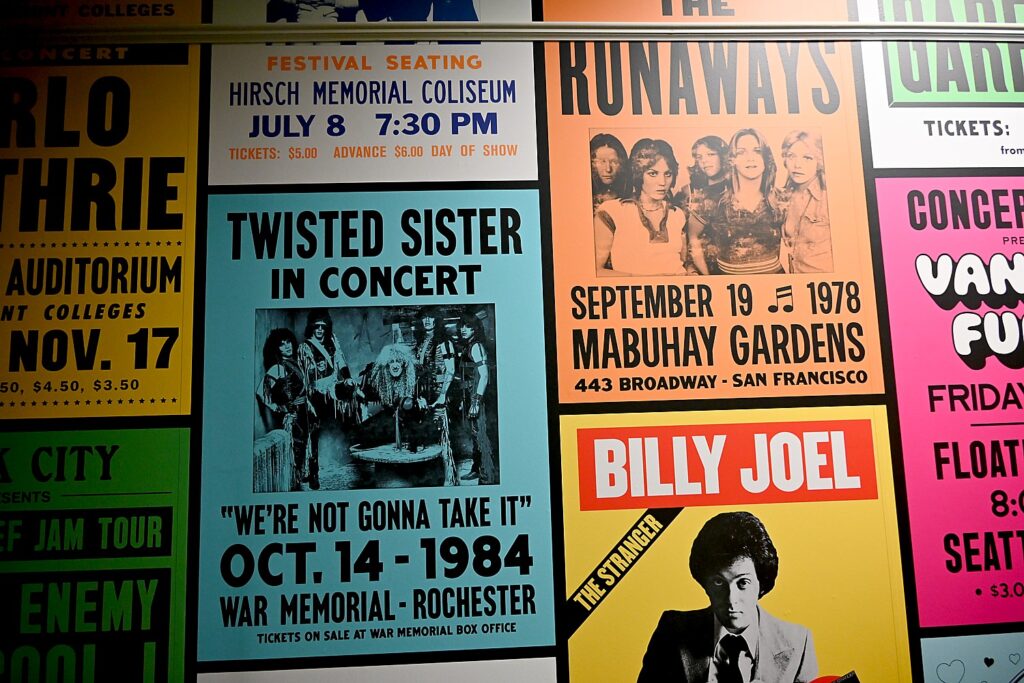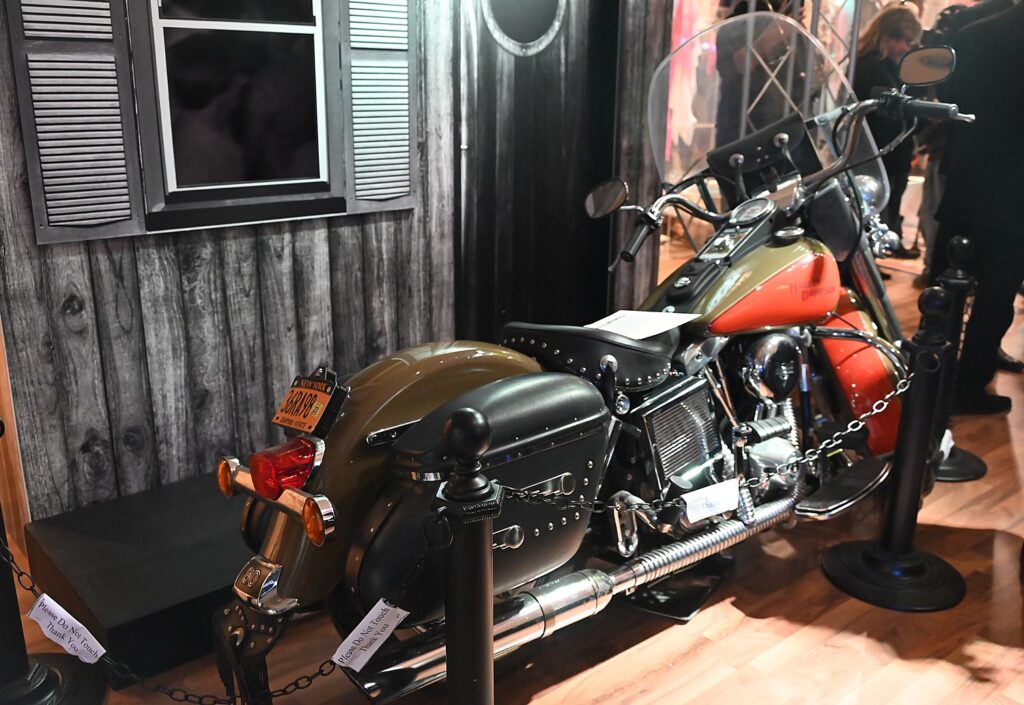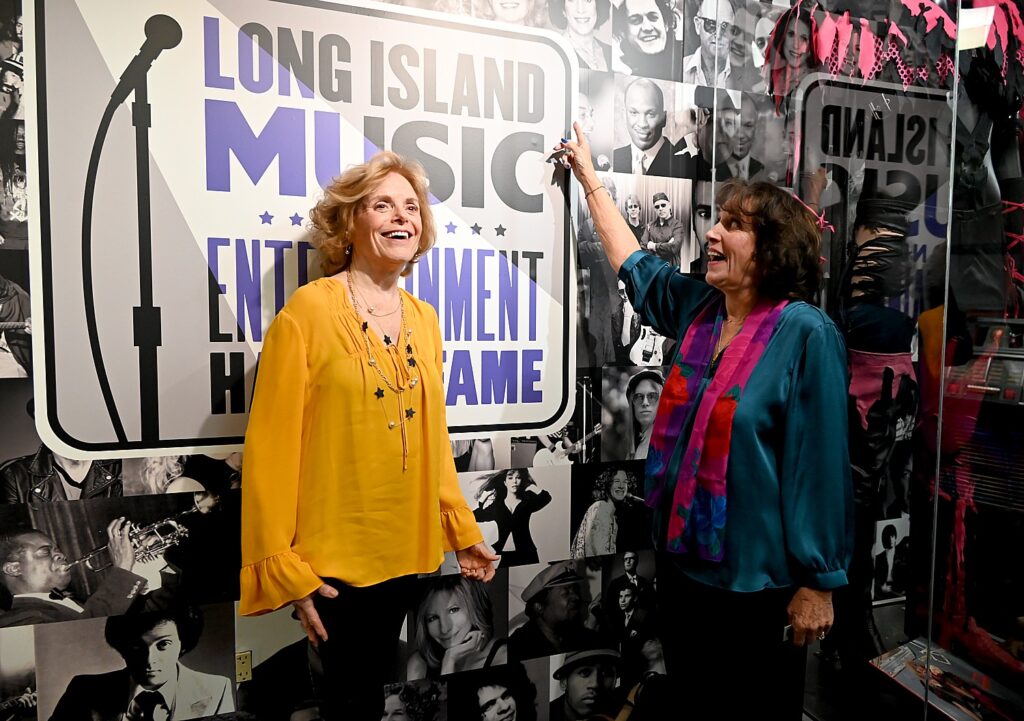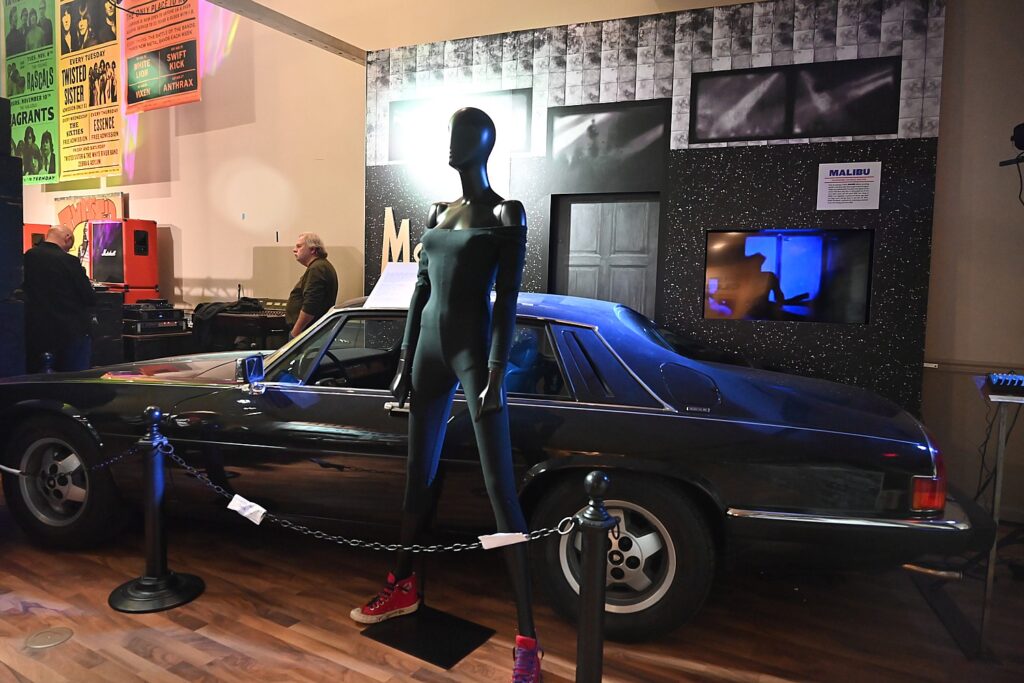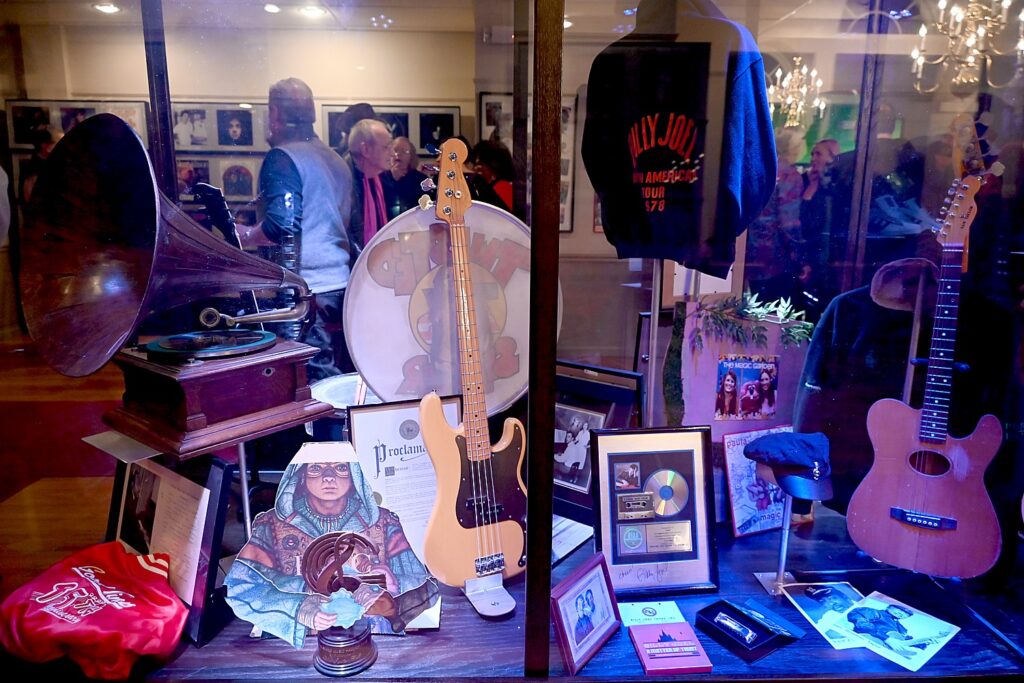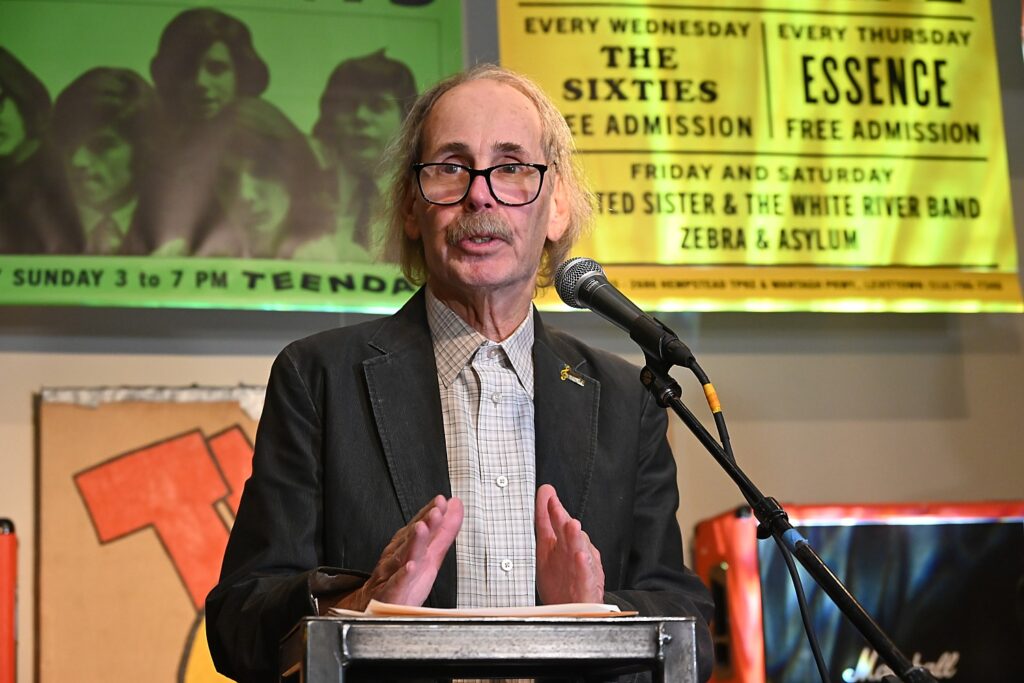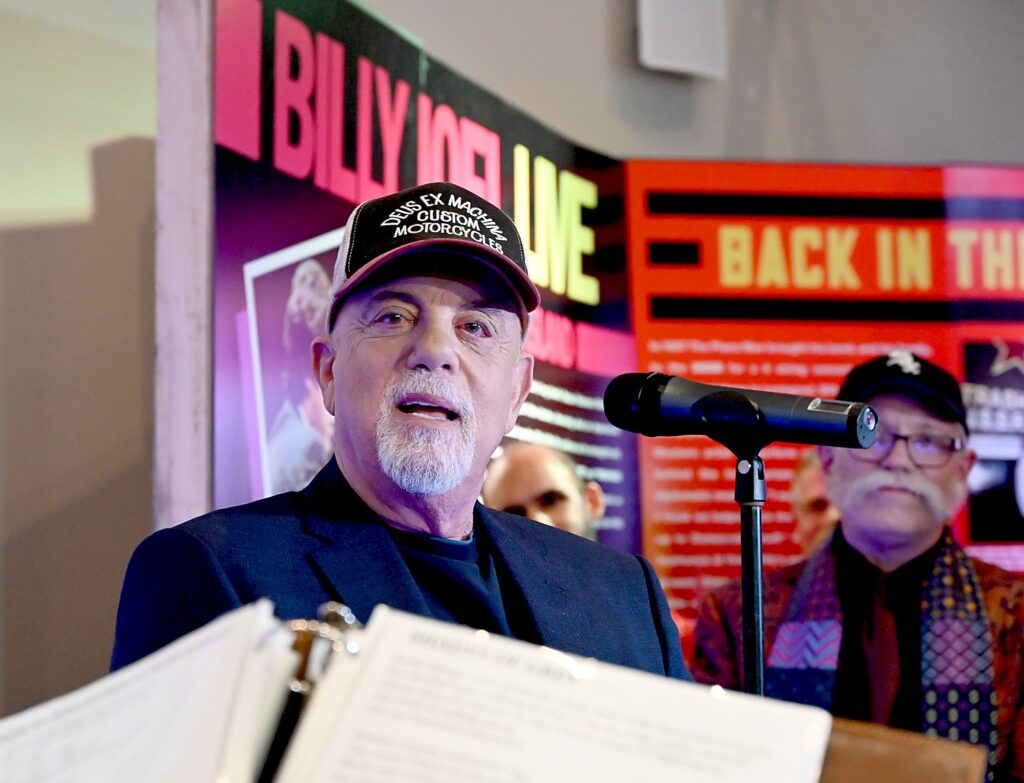
By Karen Rubin, Travel Features Syndicate, www.goingplacesfarandnear.com
After nearly a year of planning, the Long Island Music and Entertainment Hall of Fame (LIMEHOF) opened the first-ever exhibit dedicated exclusively to LIMEHOF Inductee and Long Island’s own music legend Billy Joel, at its Stony Brook museum location .
Billy Joel – My Life, A Piano Man’s Journey, created with Joel’s support and chock-full of his personal items, is this incredible showcase that brings you into his decades long career. It includes some of Billy Joel’s most cherished items, rare memorabilia, behind-the-scenes videos, awards, rare audio and video recordings, vintage instruments and historic photos, many donated by Billy Joel and never seen before in public.
This exhibit, the second since the museum opened in November of 2022, is a precious opportunity to experience Billy Joel’s life-spanning career from his roots in Levittown through his record albums, tours, inspirations, and personal experiences. You follow his life from his early days in bands like the Lost Souls, the Hassles and Attila through his solo career from his 1971 “Cold Spring Harbor” debut album, his monumental concert series with Elton John, his historic concert in the Soviet Union, at Shea Stadium, as Madison Square Garden’s artist in residence, to the present.
While Billy Joel has shunned such attention in the past, his incentive for cooperating on this exhibit was his desire to boost Long Island. “Historically Billy Joel has never done an exhibition. He doesn’t like to blow his own horn because he’s kind of a humble guy next door,” said Kevin O’Callaghan, LIMEHOF board member and Creative Director, who designed the exhibit. “When I said to Billy, ‘I think Long Island really needs this,’ he gave me the thumbs up. It was a home run.”
That humility – and his commitment to Long Island – was on view at a preview of the exhibit on November 21, just before its official opening.
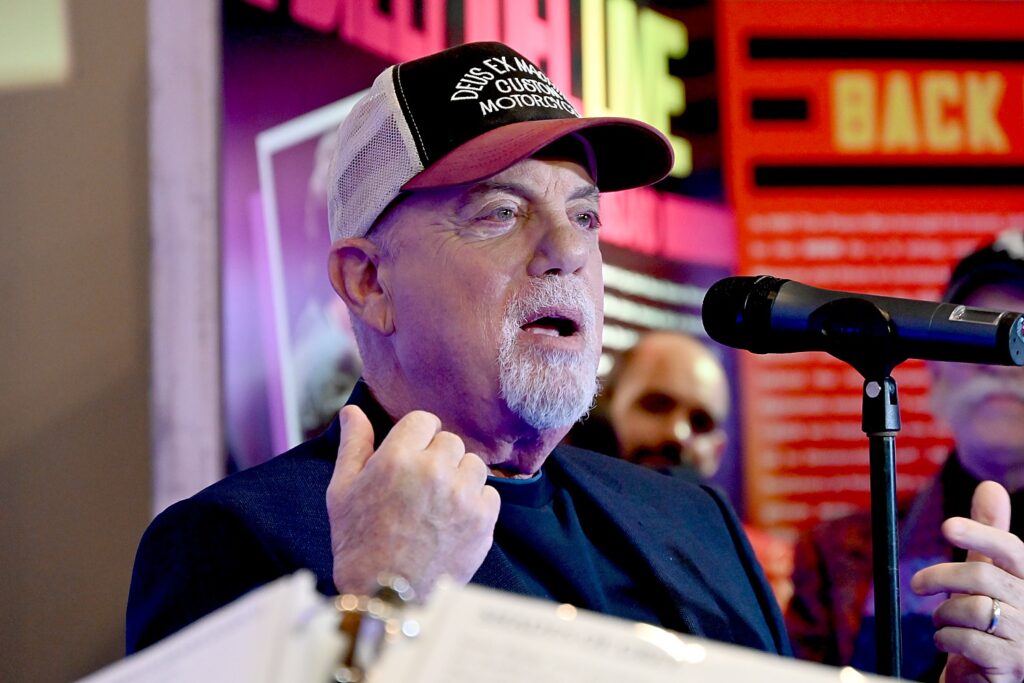
“Where did they get all this junk? I didn’t know where they were storing all these things,” Joel joked. “This is quite an honor. I didn’t expect it to be that extensive. I’ve had a life.”
“This is a little overwhelming. Did you ever find yourself surrounded by you? I guess I lived,” Joel reflected, surveying the room. “I always wondered, did I pick this life or did it pick me? ‘Cause I really didn’t think I had much of a choice. I was going to do this no matter what because I love music.”
Joel also declared that even though he’s currently selling his Centre Island home, he’s not leaving Long Island.
“This is my home and it will always be my home,” said Joel. “We will come visit this place a lot.”
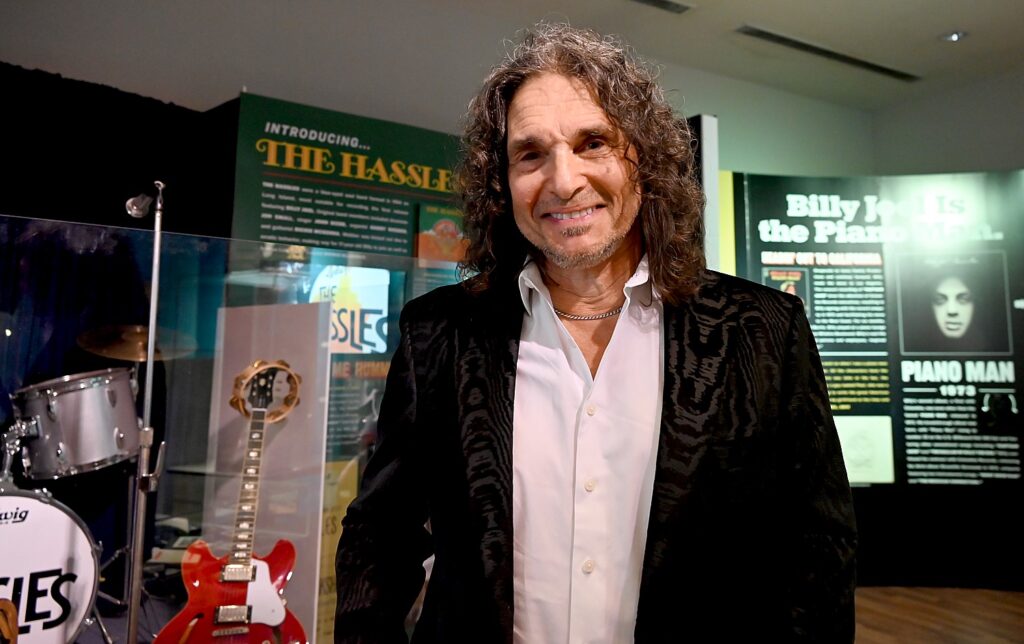
Bob Buchmann, who had been a DJ at WBAB for 20 years (he’s now director of music programming for Sirius XM) came from Los Angeles to be at the event. He reflected that he began working with Billy Joel 29 years ago on his charity that Joel named Charity Begins at Home. “That tells you where his head is. Few people know the commitment Billy Joel has to Long Island.” He started working with Joel after “The Stranger.” “He was already a big deal. Then he became a bigger deal.” (For his accomplishments as a musician and humanitarian, Joel was honored as the 2002 MusiCares Person of The Year by the MusiCares Foundation and the National Academy of Recording Arts & Sciences.)
To construct the biography that fills the notes in the panels, O’Callaghan “did deep research. I interviewed 100, contacted other musicians. The funny thing is that on Long Island, everyone has a Billy Joel story, met him, spoke to him.”
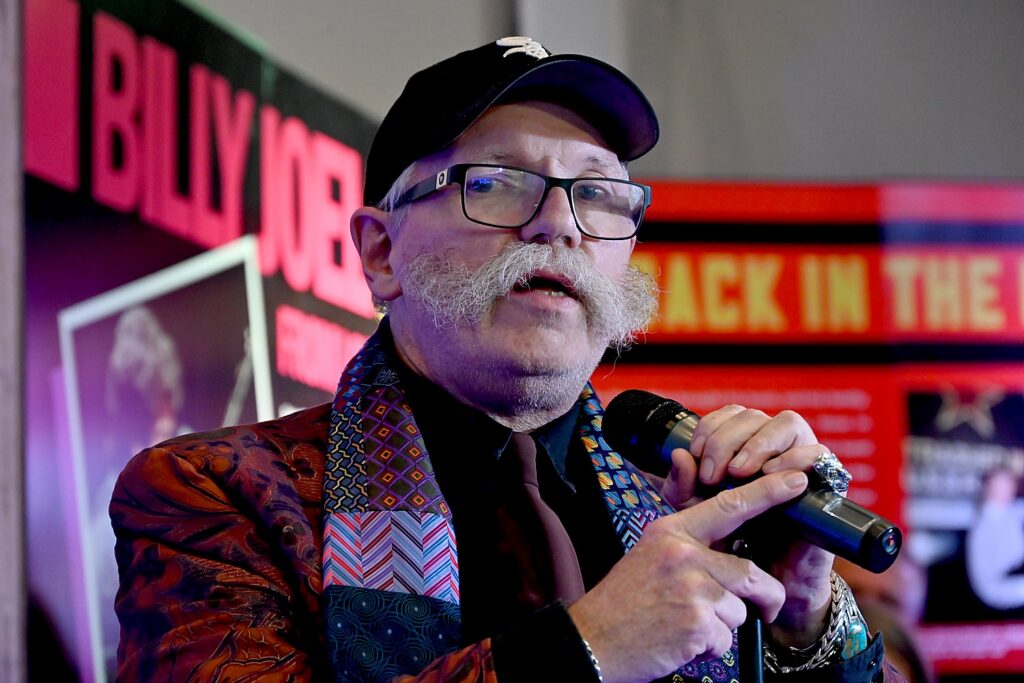
Were there any revelations in the course of his research? “The amount of success he had after “Piano Man.” Every record he did had 2,3,4 hits, a nonstop train, then he stopped recording and went into touring.” Billy Joel produced 13 studio albums, the last one more than 20 years ago.
“It has been a thrill and an honor to work with Billy in creating this extraordinary testament to his life and music,” O’Callaghan remarked. “It is one of the highlights of my long career and I’m sure visitors will be thrilled with the result.” O’Callaghan, who also designed LIMEHOF’s first exhibition, and Canadeo presented the exhibit plans and designs to Billy Joel several times during the past year and incorporated his input.
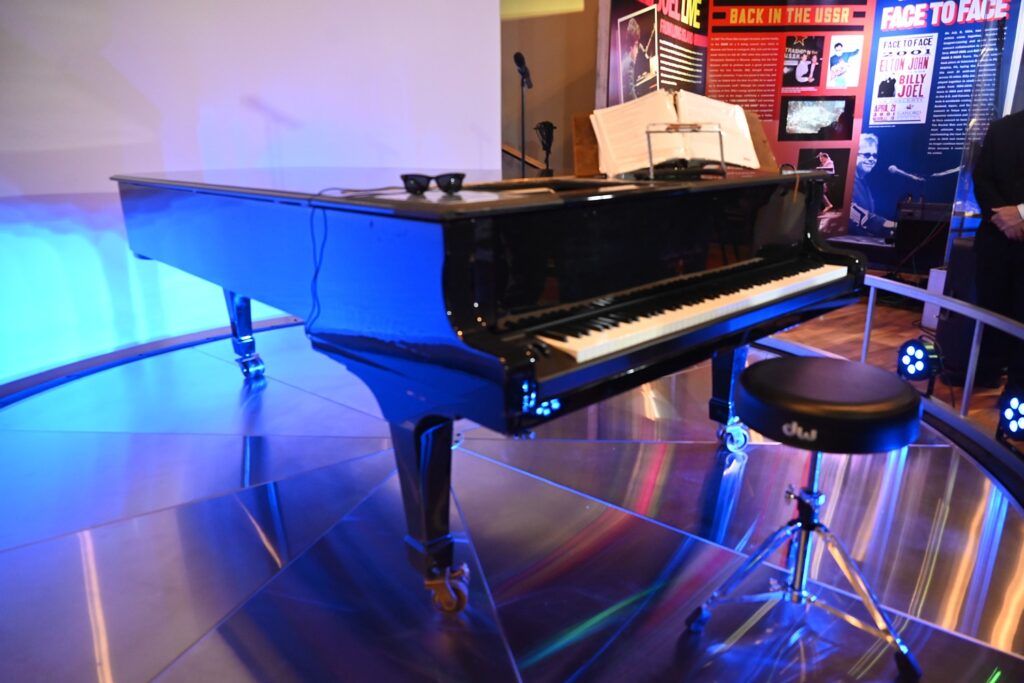
The centerpiece of the exhibit is a grand piano Joel used on his “Face to Face Tour” with Elton John that sits on a 16-foot revolving turntable with a wall-sized backdrop of live concert clips of him playing the piano with audio – including performing with Paul McCartney. On top of the piano is Joel’s harmonica and neck brace that O’Callaghan said he found inside the piano. “This is like holy grail stuff.”
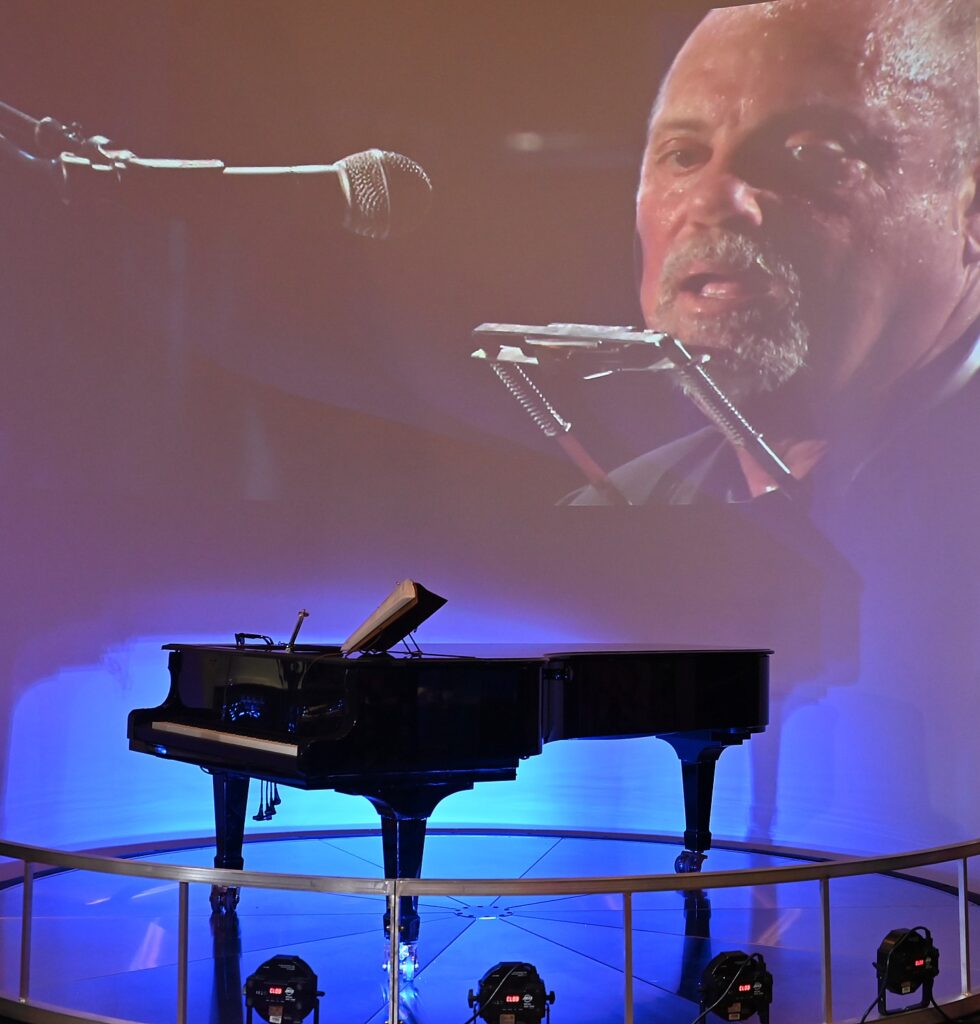
The Rocket Man and The Piano Man came together in July 1994 and began what is considered the longest-running, most successful collaboration in pop music history. They played in stadiums across the globe from 1994-2010.
Other highlights: in 1987, Billy Joel brought his band and his family to the USSR for six concerts in Moscow and Leningrad, making history when they played at Olimpiyskiy Stadium in Moscow as the first Western artist to perform behind the Iron Curtain. “Billy thought himself a diplomatic musician. ‘I was very proud of that trip, and I think we helped kick the door in a little bit to open it up to democratic stuff’.”
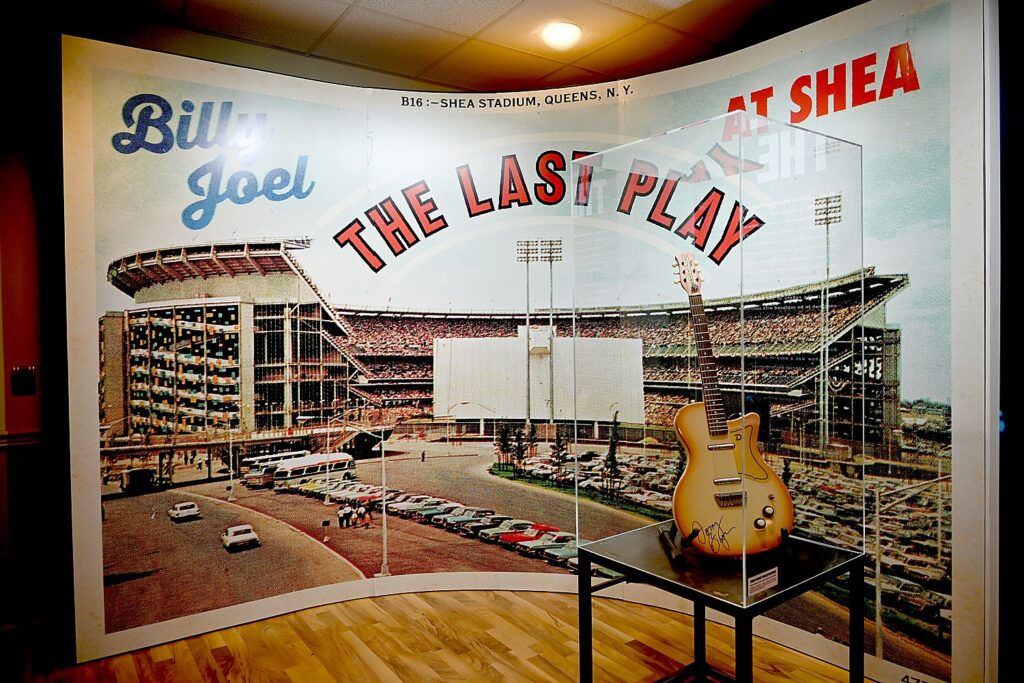
Shea Stadium was opened in 1965 with a concert by The Beatles, and Billy Joel headlined the final act before it closed in 2008. “The Last Play at the Shea” had epic performances including Tony Bennett singing “New York State of Mind”, but then Paul McCartney surprised him, running onstage to perform “I Saw Her Standing There,” and “Let it Be,” ending the circle The Beatles began in 1965. The two played together again to open Citifield.
The most remarkable relationship, though, is Billy Joel’s 45 year relationship with Madison Square Garden, beginning in 1978. In 2013, he became MSG’s first-ever music franchise, starting a residency in January 2014 with a line up of one show per month “as long as the demand continues.” By 2018, he had hit 100 performances; a banner in the exhibit lists 125, and he is expected to hit 150 before the residency finally ends next year.

Throughout the exhibit, there are these incredibly personal insights into his music.
Of the items of which O’Callaghan was most proud to display are the music instruments that his band, The Hassles, would have used, including the keyboard and a rare scroll bass and a piano (the drum with The Hassles name is original, but the musicians would not part with their actual instruments).

“The Hassles. That was the beginning, his first success. One hit record – he got a taste of what it was like to be a star. It was pivotal to make contact with them, it was fun.”
In a panel titled “Billy the Kid,” Joel is quoted as saying, “I could make my piano talk for me. The piano spoke what I was feeling.”
It’s because the exhibit is so personal, so intimate that it is so inspiring. You see Billy Joel’s house in Levittown, considered the birthplace of America’s Suburbia (he changed the name to Allentown for the song), where his parents moved from the Bronx soon after he was born in 1949. There is actually a program for his first recital at age 11, and a photo of him playing in a high school band.
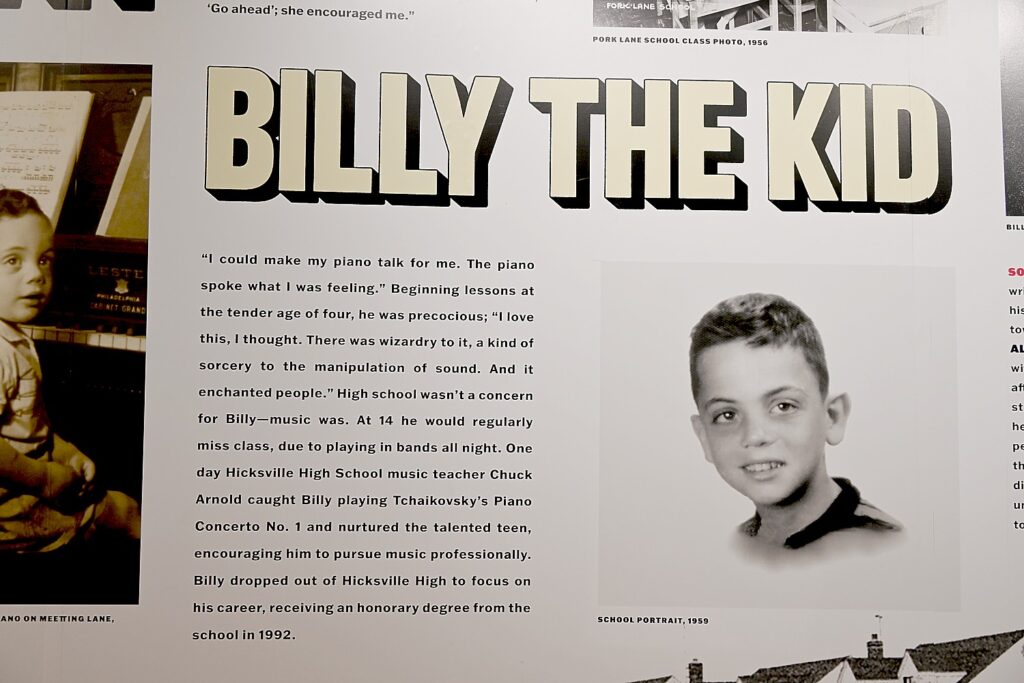
His father was a virtuoso concert pianist as well as a businessman who was born in was born in Nuremberg, Germany, to a Jewish family who emigrated to the US by way of Cuba (because of US quotas) to escape Nazi Germany. His mother, born in Brooklyn to Jewish parents who emigrated from England, was the one who insisted on Billy taking music lessons.
“Beginning lessons at the tender age of four, he was precocious,” we learn from one of the panels. “‘I love this, I thought. There was wizardry to it, a kind of sorcery to the manipulation of sound. And it enchanted people.’ High school wasn’t a concern for Billy – music was. At 14 he would regularly miss class due to playing in bands all night. One day, Hicksville High School music teacher Chuck Arnold caught Billy playing Tchaikovsky’s Piano Concerto No. 1 and nurtured the talented teen, encouraging him to pursue music professionally.”

Billy dropped out of Hicksville High to focus on his music. But in 1992, after submitting essays to the school board in lieu of the missed exam, he finally was awarded his diploma at Hicksville High’s graduation ceremony 25 years after leaving. He returned 25 years after that, in 2017, to give the commencement address. Meanwhile, he has earned honorary doctorates from Fairfield University (1991), Berklee College of Music (1993), Hofstra University (1997), Southampton College, Syracuse University (2006), Manhattan School of Music (2008) and Stony Brook University (2015).
Another panel describes his influences. In addition to Gershwin and Beethoven, we learn that “In the late 50s, Billy was fascinated by Elvis Presley, impersonating him during a ‘Hound Dog’ performance in third grade. The Beatles heavily influenced Billy’s life, confirming his determination to become a professional musician.” His tastes widened to embrace 60s rock and roll, soul and blues, with influences like Ray Charles, Otis Redding and Chuck Berry, jazz greats Art Tatum, Dave Brubeck and Oscar Peterson. The Beach Boys were also important to him: he opened for the Beach Boys early on in his career, and later performed “Don’t Worry Baby” at a Brian Wilson tribute concert in 2010.
We are brought back in time to Billy Joel’s early band: The Hassles were “a blue-eyed soul band” formed in 1964 on Long Island, most notable for recording the first release featuring Billy Joel (he was 17 when he joined). The Hassles earned $250 a week as the house band for My House, a club run by Danny Mazur. “The band often played 20-hour days in clubs throughout Long Island and Manhattan, sneaking into shows like Led Zeppelin and Jethro Tull during their free time. The Long Island band served as an educational experience for Billy, signing with United Artists and getting his first taste of success.” (If you saw LIMEHOF’s first exhibition, you would appreciate the impact that Long Island’s many music venues had on birthing the talent that now fills its Hall of Fame.)

We learn that “The Piano Man” (1973), Joel’s second album and first with Columbia, “is what really went on when I was a piano man in this piano bar,” Billy Joel said in 2017. “All the characters have the same name. There was John at the bar, the bartender, Davy was in the Navy, a guy named Paul, who was a real estate agent and was trying to write the great American novel, and the waitress, who was my girlfriend at the time and then became my wife.”
There are stations where you can listen to albums like “The Stranger” (1977), Joel’s first critical and commercial breakthrough album, which sold over 10 million copies and spawned hit singles including “Just the Way You Are,” “Movin’ Out,” “Only the Good Die Young,” “She’s Always a Woman” and “Scenes from an Italian Restaurant,” which is notably one of Joel’s favorites of his own songs. You can also listen to “52nd Street” (1978), his first album to peak at No.1 on the Billboard 200 chart, among others.

He has gone on to sell 160 million records, making him one of the world’s top-selling music artists; had 33 Top 40 hits and 23 Grammy nominations since signing his first solo recording contract in 1972, winning six.
He has gone on to sell 160 million records, making him one of the world’s top-selling music artists; had 33 Top 40 hits and 23 Grammy nominations since signing his first solo recording contract in 1972, winning six. He has won the Grammy Legend Award (1990), was inducted into the Songwriters Hall of Fame (1992), the Rock & Roll Hall of Fame (1999), and the Long Island Music Hall of Fame (2006). He’s won the Johnny Mercer Award (2001)Diamond Award from the Recording Industry Association of America for albums that sold over 10 million copies; got a star on Hollywood’s Walk of Fame (2004), and received The Library of Congress Gershwin Prize for Popular Song (2014).
What such a retrospective shows is that Billy Joel’s songs are less the typical love sought or love lost that are typical of pop, but more ballads that “meant something during the time in which I lived … and transcended that time” – like “We Didn’t Start the Fire”. Indeed, he was presented with the Kennedy Center Honor (December 2013), given for influencing American culture.
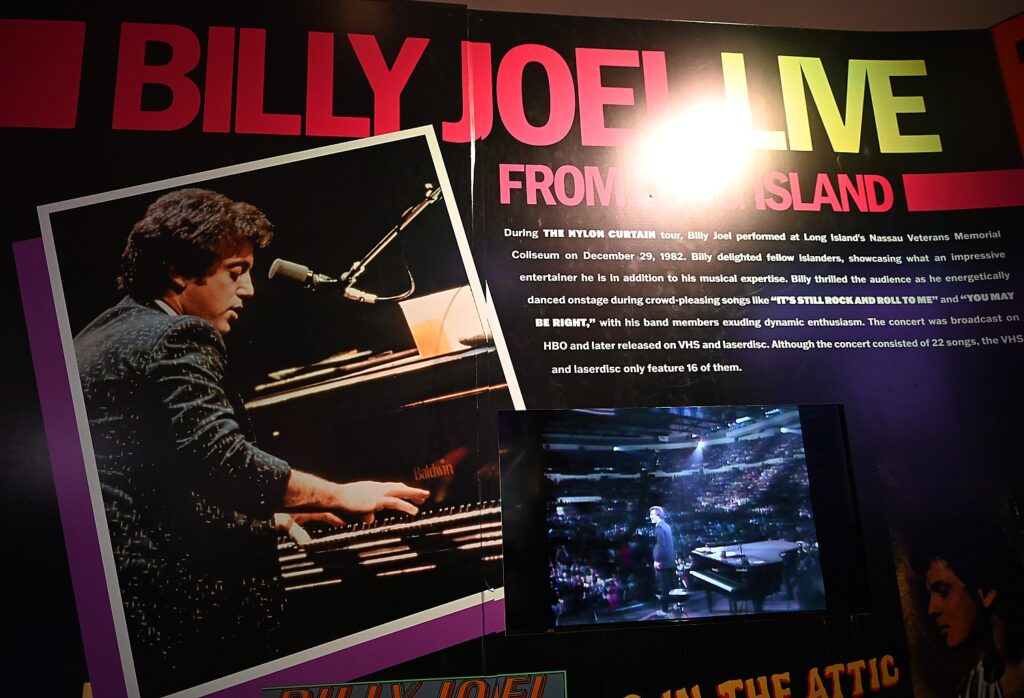
Joel has remained true to his Long Island roots. His first solo album was named for the hamlet, Cold Spring Harbor. He recorded Live from Long Island, his first video special, at the Nassau Veterans Memorial Coliseum in Uniondale on December 30, 1982. When he premiered his new song “Christmas in Fallujah”. on December 1, 2007, it was performed by Cass Dillon, a new Long Island based musician. (The track was dedicated to servicemen based in Iraq. Joel wrote it in September 2007 after reading numerous letters sent to him from American soldiers in Iraq. “Christmas in Fallujah” is only the second pop/rock song released by Joel since 1993’s River of Dreams; proceeds benefited the Homes For Our Troops foundation).
On December 12, 2012, Joel performed at the Concert for Sandy Relief at Madison Square Garden in support of victims. In October, 2013, Joel held a surprise concert at The Paramount in Huntington to benefit Long Island Cares. His August 4, 2015 concert at Nassau Coliseum was the final concert before prior to the arena’s $261 million renovation and he returned to on April 5, 2017 to play the first concert at the newly renovated venue.And in 2010, Joel opened a shop in Oyster Bay to manufacture custom-made, retro-styled motorcycles and accessories. One of his motorcycles is on exhibit at LIMEHOF.
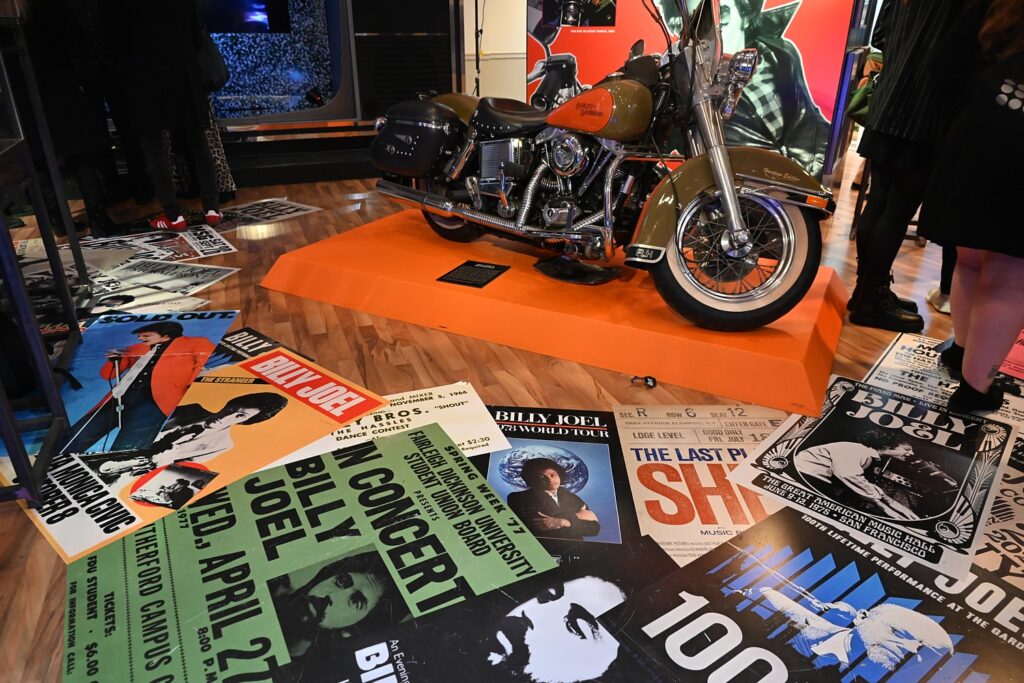
“We are thrilled and honored to present the Billy Joel exhibit everyone has been waiting for,” said Ernie Canadeo, LIMEHOF Chairman. “Billy has been very cordial and involved in the planning, and it is appropriate the exhibit is on Long Island, where he has long been identified, written so many songs and lived most of his life. It is a fitting tribute to Long Island’s most successful entertainer and is guaranteed to thrill his legions of fans.”
The LIMEHOF Billy Joel exhibit is supported and sponsored by Catholic Health, The Joel Foundation, Madison Square Garden Entertainment, Jake’s 58 Casino Hotel, The Haugland Group, M&T Bank, The EGC Group and Lessing’s Hospitality.
“Catholic Health is very proud to be the presenting sponsor of the Long Island Music and Entertainment Hall of Fame and this particular exhibit really captures what it’s all about,” said Joe Carofano, Senior Vice President of Strategy and Chief Marketing Officer of Catholic Health. “Billy Joel, The Long Island Music and Entertainment Hall of Fame and Catholic Health all share a common love of Long Island; its spirit, its heritage and its unique character. Our roots are intertwined; bringing us together to celebrate the joy of life that Long Island inspires in all of us.”
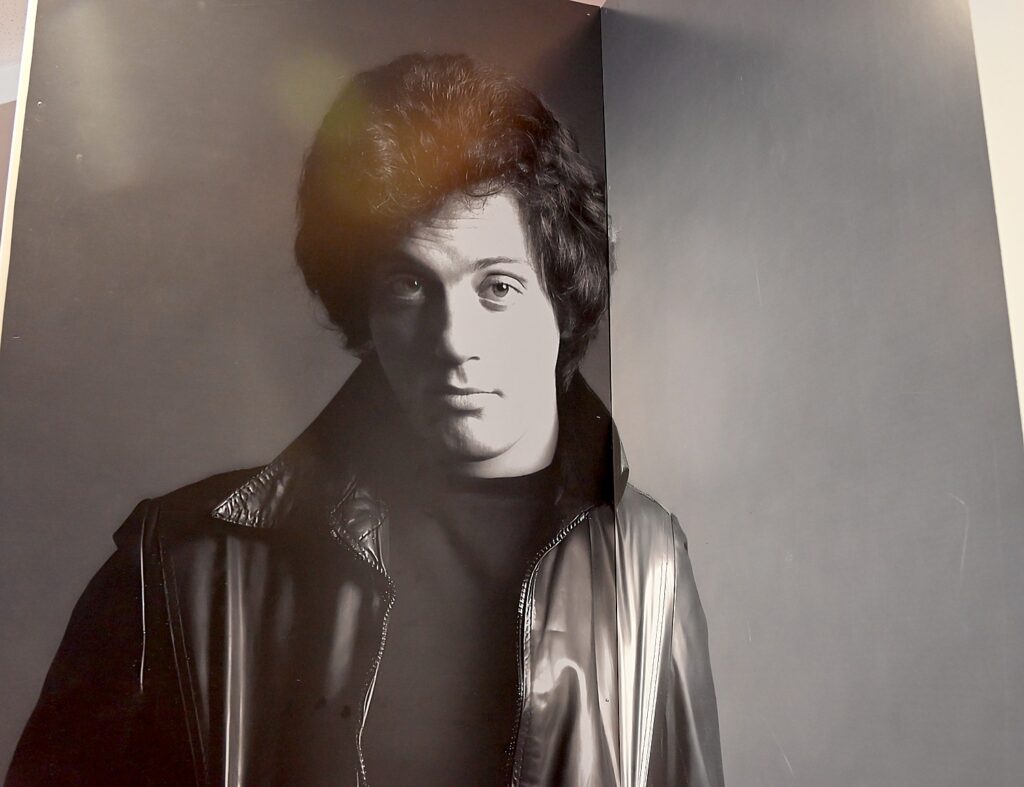
Timed entry tickets are available at www.TheBillyJoelExhibit.com and at LIMEHOF (VIP “any time” tickets good for the duration of the exhibit, are also available). The exhibit is open Wednesday, Thursday, and Sunday (11 am-6 pm); and Friday and Saturday (11 am-7 pm). The exhibit is expected to run at least through August 2024.
Founded in 2004, the Long Island Music Hall of Fame is a 501(c)(3) organization dedicated to the idea that Long Island’s musical and entertainment heritage is an important resource to be celebrated and preserved for future generations. The organization, which encompasses New York State’s Nassau, Suffolk, Queens, and Kings (Brooklyn) Counties, was created as a place of community that inspires and explores Long Island music and entertainment in all its forms. In 2022, LIMEHOF opened its first Hall of Fame building location in Stony Brook, New York. To date, the organization has inducted more than 120 musicians and music industry executives, and offers education programs, scholarships, and awards to Long Island students and educators.
For more information about LIMEHOF visit www.LIMEHOF.org
____________________________
© 2023 Travel Features Syndicate, a division of Workstyles, Inc. All rights reserved. Visit goingplacesfarandnear.com, www.huffingtonpost.com/author/karen-rubin, and travelwritersmagazine.com/TravelFeaturesSyndicate/. Blogging at goingplacesnearandfar.wordpress.com and moralcompasstravel.info. Visit instagram.com/going_places_far_and_near and instagram.com/bigbackpacktraveler/ Send comments or questions to FamTravLtr@aol.com. Tweet @TravelFeatures. ‘Like’ us at facebook.com/NewsPhotoFeatures
